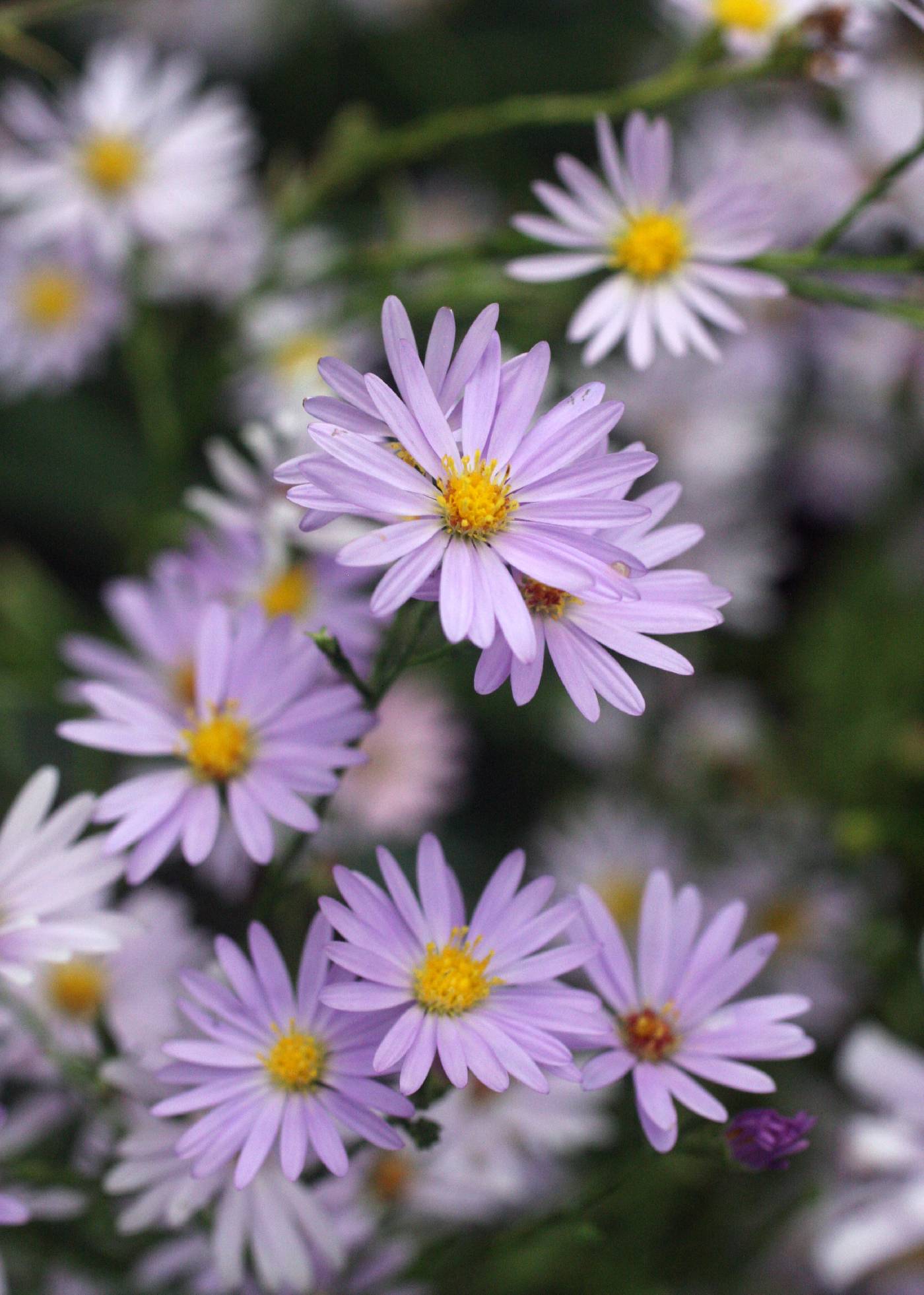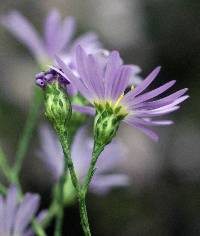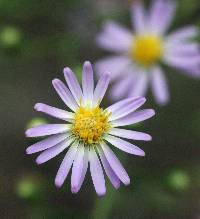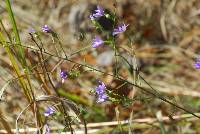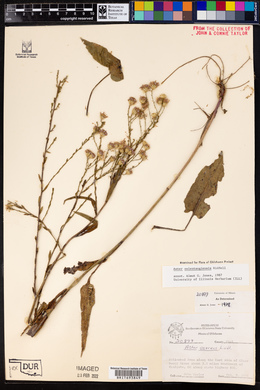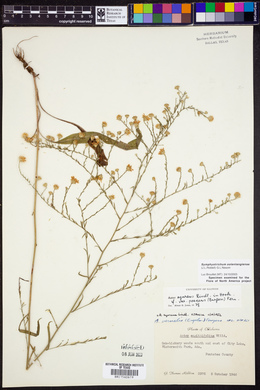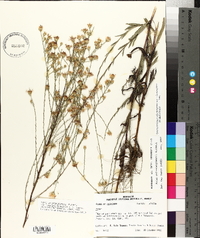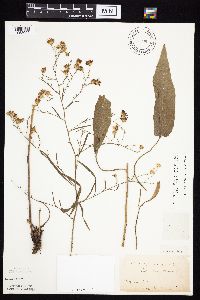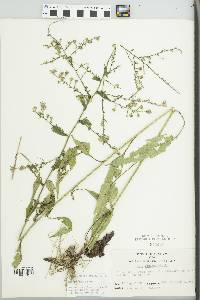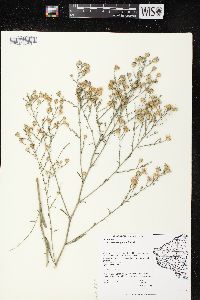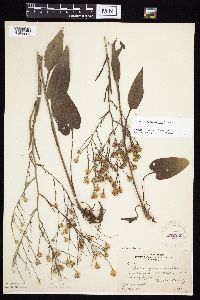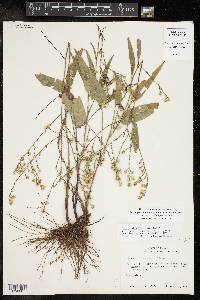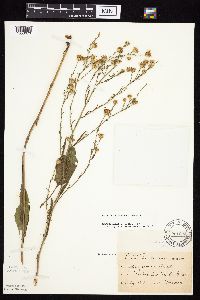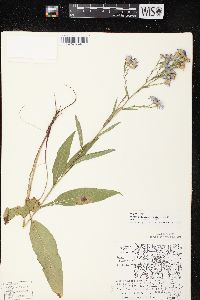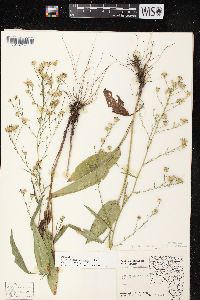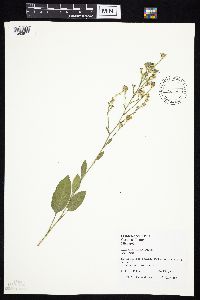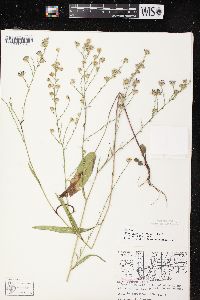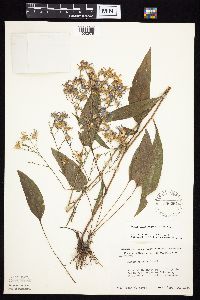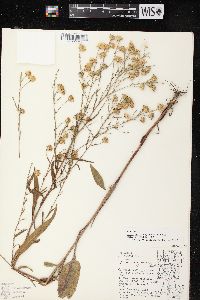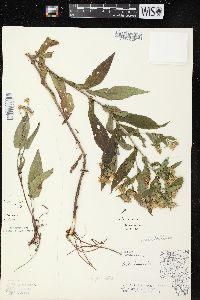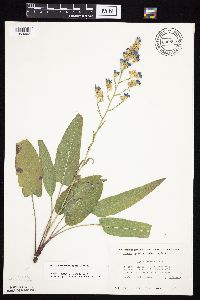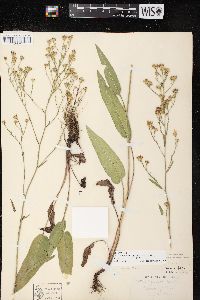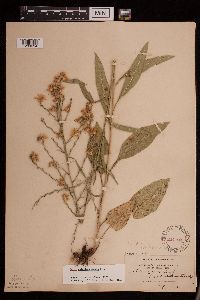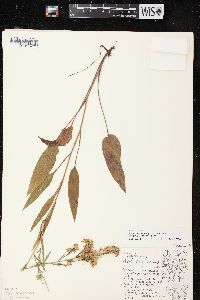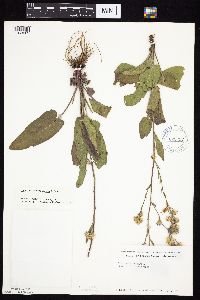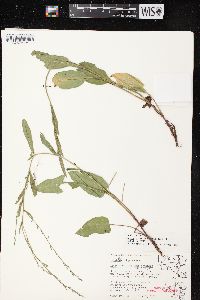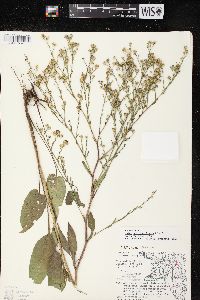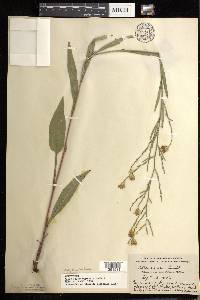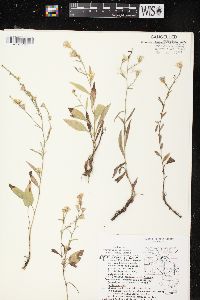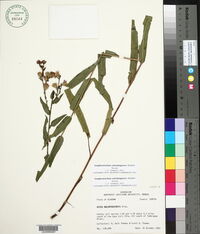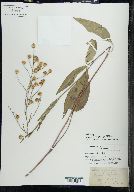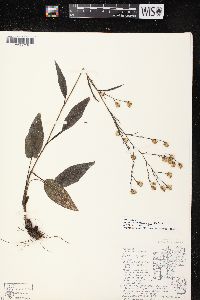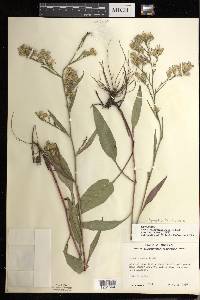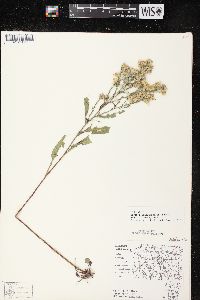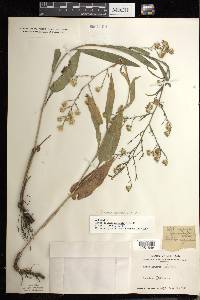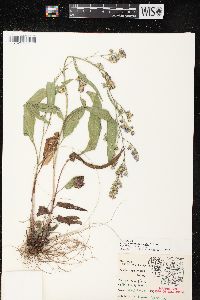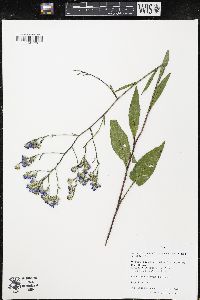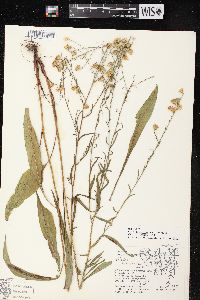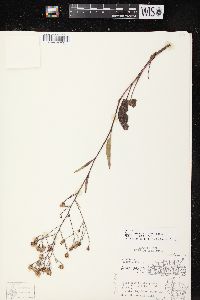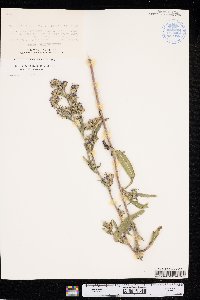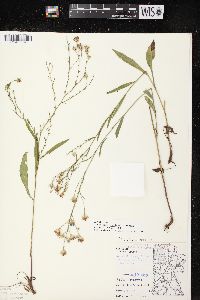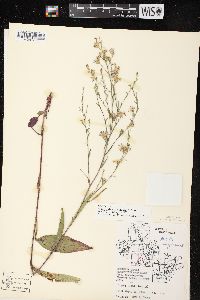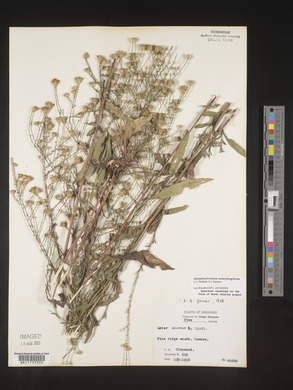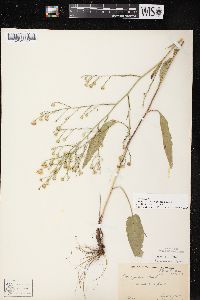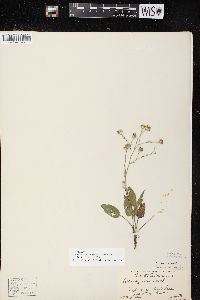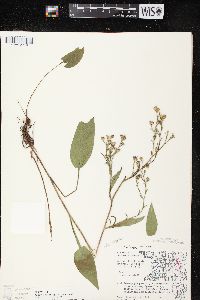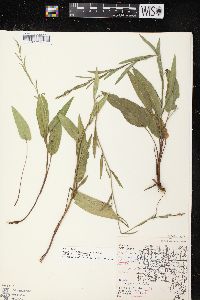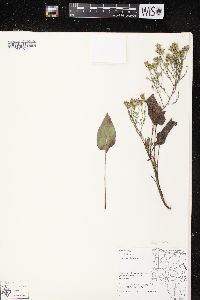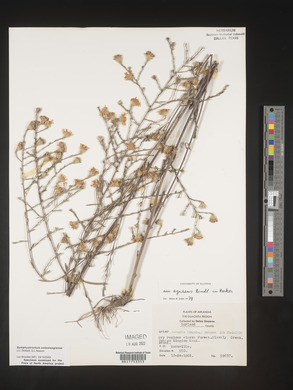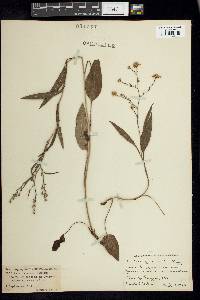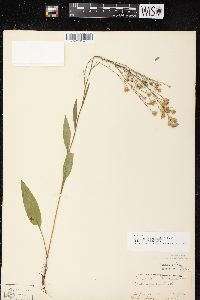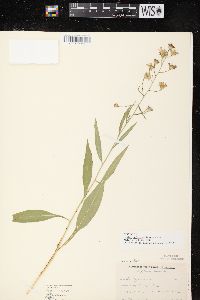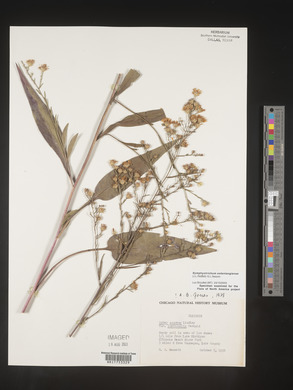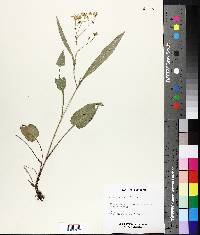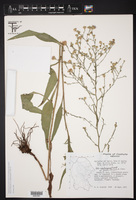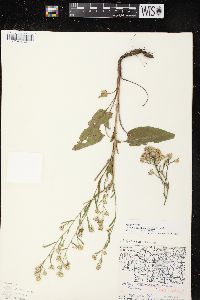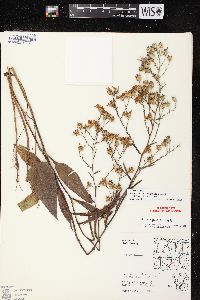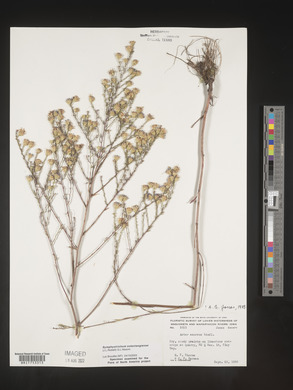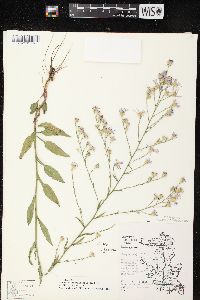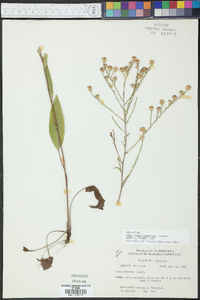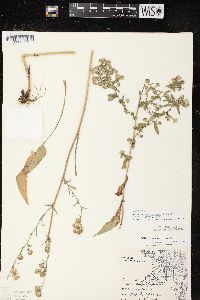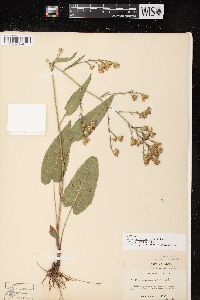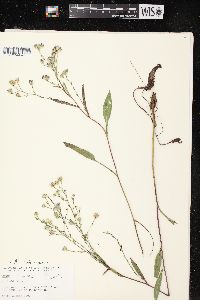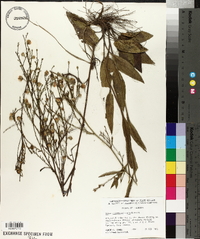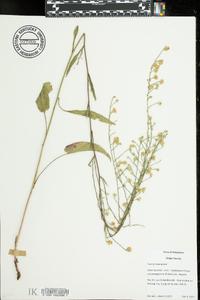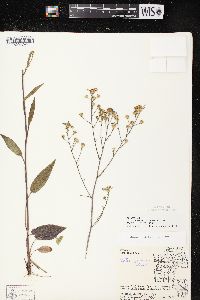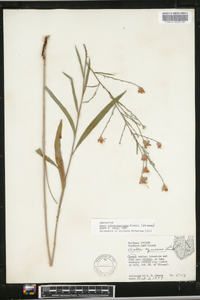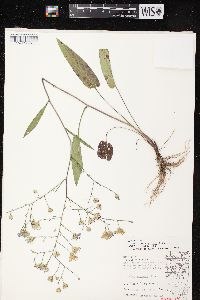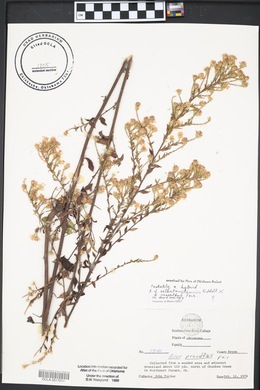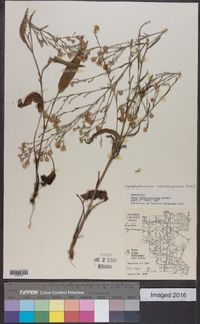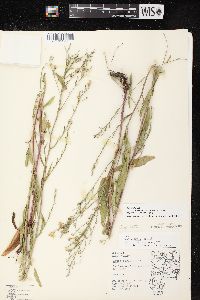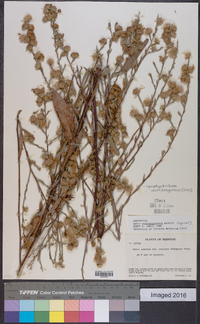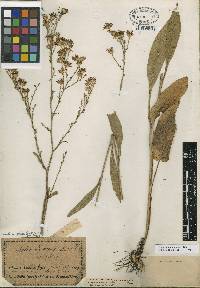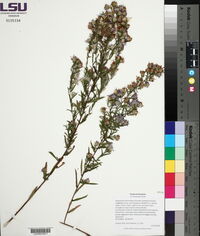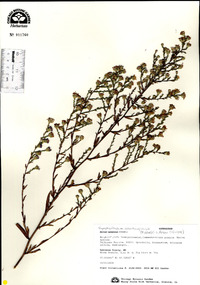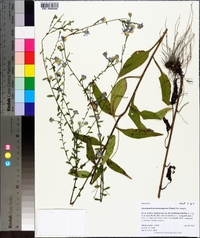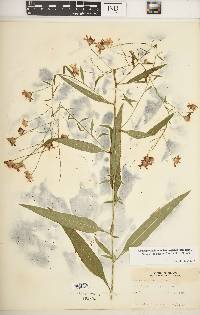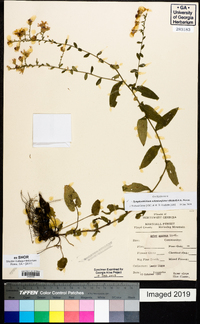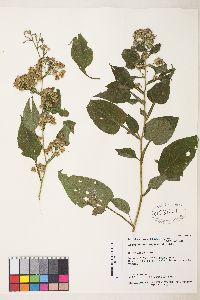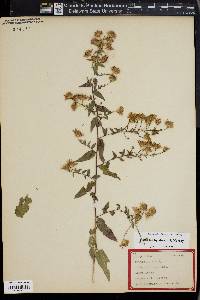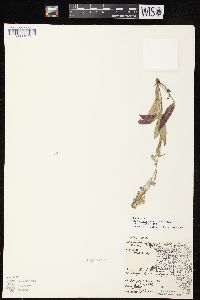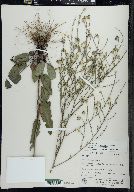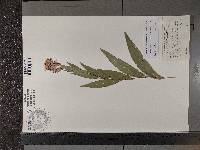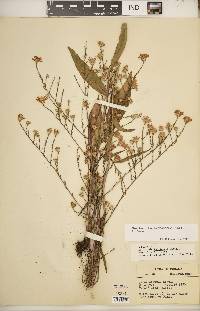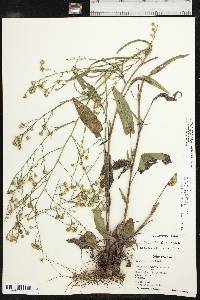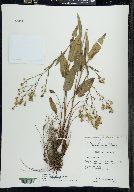Symphyotrichum oolentangiense
|
|
|
|
Family: Asteraceae
Sky-Blue American-Aster, more...skyblue aster
[Aster azureus Lindl., moreAster azureus f. incarnatus Farw., Aster azureus f. laevicaulis Fern., Aster azureus var. laevicaulis , Aster azureus var. poaceus (Burgess) Fernald, Aster azureus var. scabrior , Aster oolentangiensis Riddell, Aster oolentangiensis var. laevicaulis (Fernald) A.G. Jones, Aster oolentangiensis var. oolentangiensis Riddell, Aster oolentangiensis var. poaceus (Burgess) A.G. Jones] |
Perennials 20-150 cm, cespitose; short-rhizomatous or with branched, woody caudices. Stems 1-5+, erect (straight), glabrate to hispidulous, distally pilosulous to strigillose in arrays. Leaves thick, firm, margins entire or crenate-serrate, scabrous, apices mucronate, faces scabrous, abaxial strigose to piloso-strigose or hirsute, adaxial strongly strigose; basal withering by flowering, long-petiolate (petioles slightly winged, bases dilated, sheathing, ciliate), blades ovate to lance-ovate, 40-150(-180) × 10-40(-60) mm, bases ± cordate or rounded to attenuate, margins crenate-serrate to subentire, apices rounded or obtuse to acute; proximal cauline petiolate (petioles narrowly winged, clasping), blades ovate or ovate-lanceolate to lanceolate, 30-130 × 12-70 mm, gradually or ± abruptly reduced distally, bases rounded to attenuate, margins entire, scabrous, apices acute or attenuate, callus-pointed; distal sessile or sometimes short-petiolate and ± winged (appressed or ascending), blades lanceolate or linear-lanceolate to subulate, 5-80 × 1-10 mm, strongly reduced distally (more sharply so on branches), bases attenuate to cuneate or ± rounded, margins entire. Heads in open, paniculiform arrays, branches ascending, stiff, sometimes long-arching and peduncles secund, ± ridged, densely leafy with small, ± appressed branch leaves, ± strigose. Peduncles ascending, 0.2-6 cm, glabrate, densely bracteate, bracts linear-subulate, scabrous- or ciliate-margined, often revolute, grading with phyllaries. Involucres campanulate to cylindro-campanulate, 4.5-8 mm. Phyllaries in (3-)4-6 series, appressed or outer slightly spreading, lanceolate to oblong-lanceolate, strongly unequal, bases indurate 1 / 2 - 3 / 4 , margins scarious, erose, hyaline, ciliolate, apical green zones diamond-shaped, apices acute to acuminate or caudate (then tips often involute), mucronulate to apiculate, faces glabrous. Ray florets (10-)13-20(-25); corollas usually pale to azure blue to violet-purple, rarely rosy, white or bluish white), laminae (5-)8-12(-14) × 1.4-1.7 mm. Disc florets (15-)20-25(-30); corollas light yellow turning deep purple, 4-5 mm, tubes much shorter than narrowly funnelform throats, lobes triangular to lanceolate, 0.4-0.7 mm (lobes sparsely hairy). Cypselae dull purple or stamineous with purple streaks, oblong-obovoid, ± compressed, 1.8-2 mm, 4-5-nerved, faces glabrate to sparsely str Flowering Aug-Oct. Open, dry, sandy, loamy, or rocky soils, dry to wet (seasonally drying) prairies, alvars, glades, bluffs, dunes, barrens, open deciduous woods, oak and/or pine savannas; 50-500 m; Ont.; Ala., Ark., Fla., Ga., Ill., Ind., Iowa, Kans., Ky. , La., Mich., Minn., Miss., Mo., Nebr., N.Y., Ohio, Okla., Pa., S.Dak., Tenn., Tex., Wis.; Mexico (Coahuila). A. G. Jones (1989) suggested that Symphyotrichum oolentangiense hybridizes with S. drummondii and S. laeve. Two color morphs, Aster azureus Lindley forma incarnatus Farwell and 'forma albidus' (the latter not validly published and incorrectly attributed to Steyermark by M. L. Fernald 1950), have been described but are not recognized here.
Plants with a branched caudex or short rhizome; stems 2-15 dm, scabrous-puberulent to occasionally subglabrous; lvs basally disposed, thick and firm, entire or occasionally shallowly serrate, scabrous-hispid above, the hairs on the lower surface softer, and usually longer and looser; basal and usually also some of the lowest cauline lvs long-petiolate, cordate (usually shallowly so) or subcordate, lanceolate or ovate in outline, 4-13 נ1.2-6 cm, some of the basal ones sometimes smaller and with more tapering base, those above ±abruptly smaller, narrower, and less petiolate, and generally not at all cordate, the upper sessile and lanceolate or linear; infl open-paniculiform, copiously and narrowly bracteate; invol 4.5-8 mm, its bracts well imbricate, obtusish to sharply acute, with a diamond-shaped green tip shorter than the chartaceous base, glabrous except for the often ciliolate margins; rays 10-25, blue (pink), 5-12 mm; achenes glabrous or nearly so; 2n=32. Prairies and dry open woods; w. N.Y. and s. Ont. to Minn. and S.D., s. to w. Tenn., nw. Miss., La., and e. Tex. (A. azureus; A. poaceus) Gleason, Henry A. & Cronquist, Arthur J. 1991. Manual of vascular plants of northeastern United States and adjacent Canada. lxxv + 910 pp. ©The New York Botanical Garden. All rights reserved. Used by permission. From Flora of Indiana (1940) by Charles C. Deam Infrequent to frequent in sandy soil in open, black and white oak woods and in the dunes. Found rarely in moist soil and once a specimen was found in a marly marsh in Henry County. This species is easily distinguished from closely related asters by the long, linear stem leaves just below the inflorescence and the appressed, linear leaves of the branches. I believe reports for this species from southern Indiana should be referred to some other species. …… Indiana Coefficient of Conservatism: C = 8 Wetland Indicator Status: N/A |

